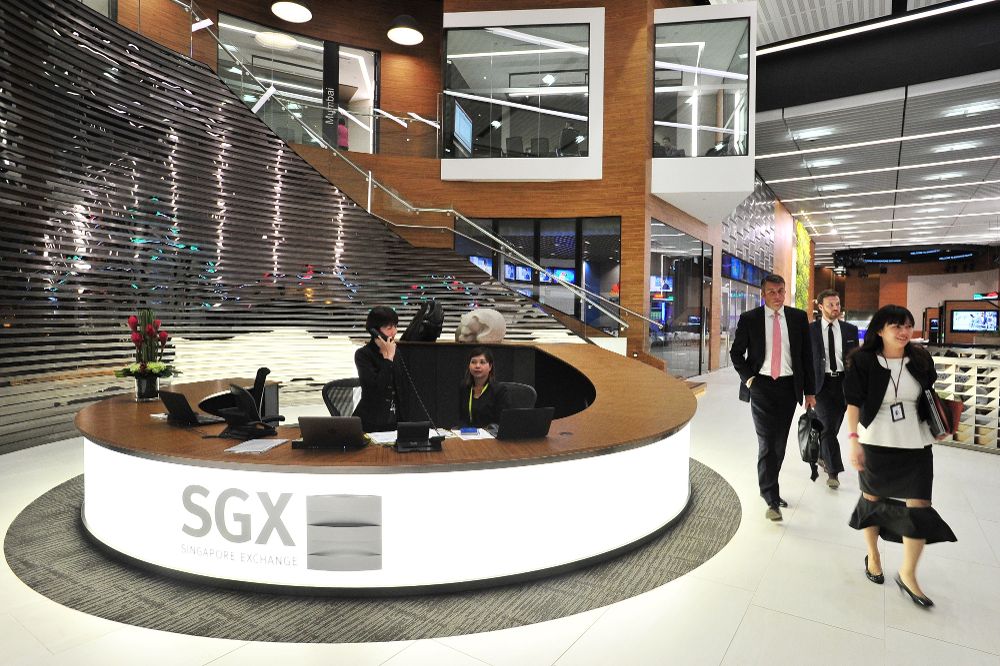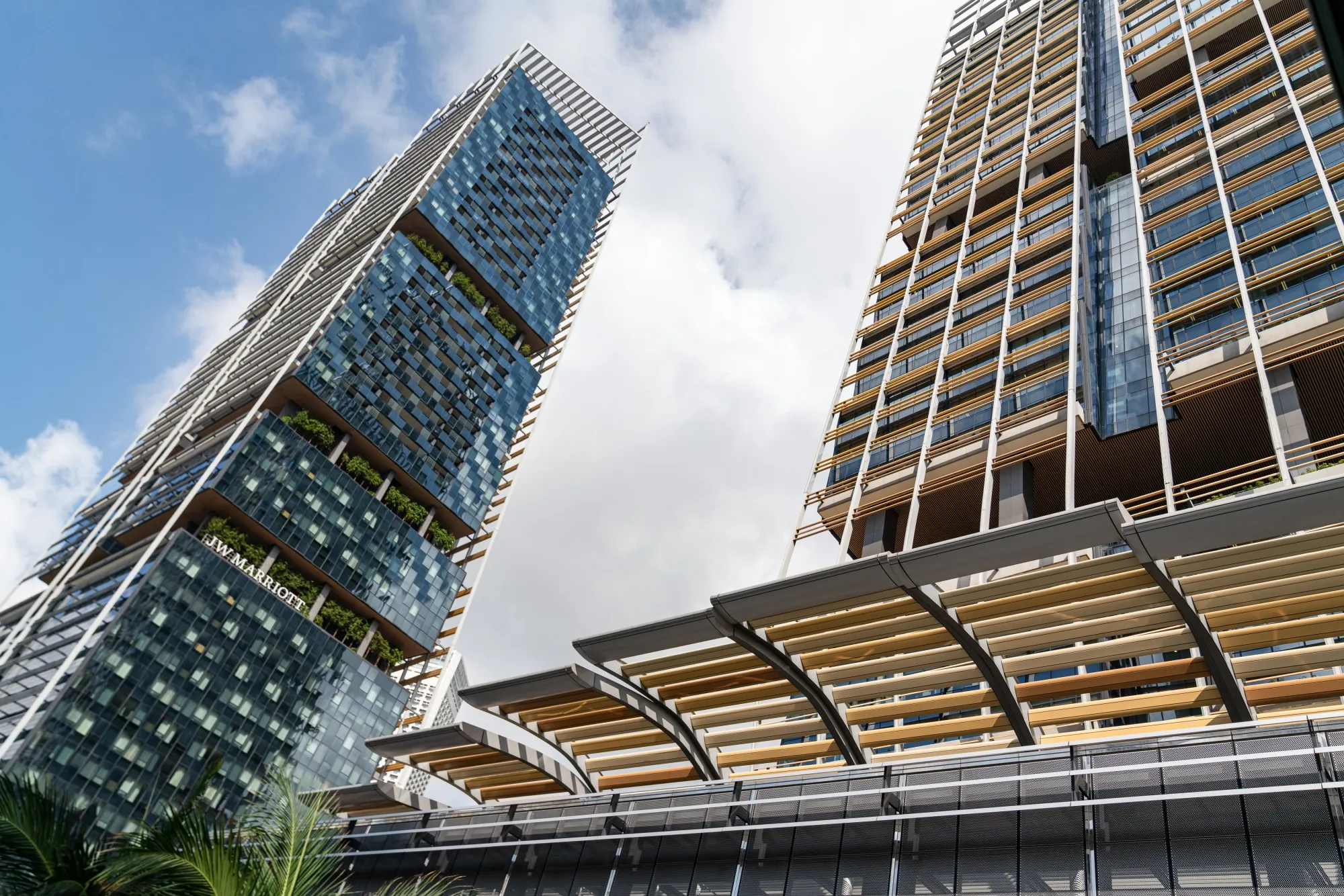The Million-Dollar Question: How CPF and SRS ETF Investing Could Transform Your Retirement
The mathematics of retirement in Singapore have shifted dramatically. A fresh CIMB study released in April 2025 reveals that 52% of Singapore residents believe they need more than S$1 million to achieve true financial independence—a figure that would have seemed fantastical a generation ago, but now represents the sobering reality of modern retirement planning.
Yet here's the fascinating paradox: whilst half of Singaporeans acknowledge needing seven-figure portfolios, many are inadvertently sabotaging their chances by leaving their CPF Ordinary Account (OA) savings to earn the legislated minimum of 2.5% per annum when strategic ETF investing within approved government schemes could potentially accelerate their wealth-building journey significantly.
The Brutal Arithmetic of Retirement Reality
Let's examine the numbers with unflinching clarity. The CPF OA interest rate remains anchored at 2.5% per annum through Q3 2025, providing guaranteed but modest returns. For context, this means S$100,000 in your OA generates just S$2,500 annually—decent for risk-free returns, but potentially insufficient for building substantial retirement wealth.
Meanwhile, Singapore's equity markets have demonstrated considerably more vigour. The Straits Times Index (STI) delivered a robust 5.3% total return in Q1 2025 alone, following an impressive 24.3% total return for the full year 2024. Over the past two decades, the STI has averaged approximately 6.91% annual returns including dividends—a significant premium over CPF's guaranteed rates.
The compound effect of this differential is substantial. S$500 invested monthly at 2.5% grows to approximately S$370,000 over 20 years. The same investment earning 7% annually could potentially reach S$520,000—a difference of S$150,000 that could fundamentally alter one's retirement lifestyle.

The Government's Hidden Investment Menu
What many Singaporeans don't fully appreciate is that both CPF and SRS schemes offer curated investment options designed to balance growth potential with prudent risk management. The CPF Investment Scheme (CPFIS) currently permits investment in six approved ETFs, whilst SRS funds can access any ETF listed on the Singapore Exchange.
These aren't speculative instruments—they're diversified, professionally managed funds tracking established indices. The approved CPF ETF list includes:
- ABF Singapore Bond Index Fund (A35): Government bond exposure with 0.24% expense ratio, delivering 9.13% returns over the past year
- Nikko AM Singapore STI ETF (G3B): Tracking Singapore's top 30 companies, with 0.28% fees and 17.09% one-year performance
- NikkoAM-StraitsTrading Asia ex Japan REIT ETF (COI): Regional property exposure, 0.29% expense ratio, 10.61% annual returns
- Nikko AM SGD Investment Grade Corporate Bond ETF (MBH): Investment-grade corporate bonds, 0.26% fees
- SPDR Gold Shares (O87): Precious metals hedge, though subject to 10% allocation limits
- SPDR Straits Times Index ETF (ES3): Alternative STI tracker with 0.55% expense ratio
These options span the risk spectrum from conservative government bonds to growth-oriented equities, enabling sophisticated portfolio construction within Singapore's retirement frameworks.
The SRS Advantage: Tax-Efficient Wealth Building
The Supplementary Retirement Scheme deserves particular attention for higher-income earners. SRS contributions provide immediate tax relief—up to S$15,300 annually for citizens and permanent residents, S$35,700 for foreigners—whilst investment gains accumulate tax-free during the accumulation phase.
Consider a professional earning S$120,000 annually in the 22% tax bracket. A maximum S$15,300 SRS contribution provides immediate tax savings of S$3,366, effectively reducing the real contribution cost to S$11,934. If these funds earn 7% annually, the tax-sheltered growth creates substantial long-term value compared to taxable investments.
SRS funds left in standard bank accounts earn merely 0.05% interest—making investment through ETFs virtually mandatory for serious wealth builders. The flexibility to invest in any SGX-listed ETF provides access to global markets, sectors, and strategies unavailable through CPF schemes.
Beyond Singapore: The Diversification Imperative
Whilst patriotic investing in Singapore blue-chips has its merits, the most sophisticated investors recognise the importance of geographic diversification. Singapore represents roughly 0.3% of global market capitalisation—concentrating retirement savings entirely domestically introduces unnecessary risk.
SRS investors can access international equity exposure through Singapore-listed ETFs tracking global indices, emerging markets, or specific regions. This capability becomes particularly valuable given Singapore's correlation with regional economic cycles and commodity prices.
The strategic approach involves building a core portfolio of Singapore assets for stability and dividend income, whilst utilising SRS allocations for global diversification and growth exposure. This balanced methodology helps mitigate single-country risk whilst capturing worldwide economic expansion.
The Dollar-Cost Averaging Advantage
Market timing consistently proves futile for retail investors—but systematic investing through Regular Savings Plans (RSPs) offers a scientifically sound alternative. By investing fixed amounts monthly regardless of market conditions, investors automatically purchase more units when prices fall and fewer when they rise, smoothing volatility over time.
This approach proves particularly powerful during market downturns. The 2020 COVID crash, 2022 tech selloff, and various regional crises created exceptional buying opportunities for disciplined investors maintaining their systematic contributions. Those who panicked and ceased investing during these periods typically underperformed significantly.
Real-World Wealth Building: The Numbers Game
Let's model realistic scenarios for achieving the coveted S$1 million threshold. Assuming a 25-year-old professional earning S$60,000 annually with a 15-year investment horizon targeting retirement at 40:
Conservative Approach (6% annual returns):
- Monthly investment: S$3,800
- Final portfolio value: S$1,000,000
Moderate Approach (7% annual returns):
- Monthly investment: S$3,200
- Final portfolio value: S$1,000,000
Growth Approach (8% annual returns):
- Monthly investment: S$2,700
- Final portfolio value: S$1,000,000
These figures assume combined CPF OA investments (above the S$20,000 minimum) and maximum SRS contributions. The tax benefits from SRS reduce the effective investment cost, making the targets more achievable than they initially appear.
For younger investors with longer time horizons, the required monthly investments decrease dramatically. Starting at 25 with a 25-year timeline requires only S$1,200-S$1,800 monthly to reach S$1 million, depending on return assumptions.
The Risk Reality Check
Investment success requires acknowledging and managing risk rather than avoiding it entirely. The approved CPF ETFs have undergone rigorous evaluation for tracking efficiency, cost structure, and risk management. These aren't speculative vehicles—they're institutional-quality funds meeting stringent regulatory standards.
However, all equity investments carry market risk. The STI experienced significant volatility during the 2008 financial crisis, 2020 pandemic, and various regional disruptions. Investors must maintain sufficient emergency funds outside their retirement accounts and commit to long-term holding periods to weather these inevitable storms.
The key insight: the risk of not investing—watching purchasing power erode through inflation whilst earning 2.5% returns—may exceed the market risk of thoughtful ETF investing within government-approved schemes.

Implementation Strategy: A Practical Framework
Phase 1: Foundation Building
- Maximise emergency fund in high-yield savings accounts
- Begin systematic SRS contributions for immediate tax relief
- Start CPF OA investing once balance exceeds S$20,000
Phase 2: Portfolio Construction
- Core allocation (60-70%): Singapore equity ETFs for stability and dividends
- Satellite positions (20-30%): International exposure through SRS
- Defensive holdings (10-20%): Bond ETFs for capital preservation
Phase 3: Optimisation
- Regular rebalancing to maintain target allocations
- Tax-loss harvesting in taxable accounts
- Systematic increases in contribution rates with salary growth
The Compound Interest Revelation
Perhaps the most powerful force in wealth building remains compound interest—Albert Einstein's alleged "eighth wonder of the world." The difference between starting at 25 versus 35 is profound, not merely because of the additional decade, but due to the compounding effect on early contributions.
S$500 invested monthly from age 25 to 35 (S$60,000 total) could grow to over S$600,000 by age 65 at 7% returns. The same S$500 monthly from age 35 to 65 (S$180,000 total) might reach only S$550,000. The earlier investor contributes one-third the capital but achieves superior results—the power of time in wealth building.
Beyond the Million: Lifestyle Implications
Reaching S$1 million represents a psychological milestone, but the real question involves purchasing power and lifestyle sustainability. Using the oft-cited 4% withdrawal rule, a S$1 million portfolio might generate S$40,000 annually in retirement income—modest by Singapore standards.
The CIMB study finding 72% of Singaporeans consider S$1 million "realistic" suggests widespread recognition that this figure represents the starting point rather than the finish line for comfortable retirement. Many financial advisors recommend S$1.5-S$2 million for maintaining middle-class lifestyles throughout retirement.
The Regulatory Landscape: Staying Compliant
Singapore's financial regulators maintain strict oversight of retirement scheme investments, regularly updating approved product lists and monitoring fund performance. The current CPFIS ETF roster reflects careful evaluation of expense ratios, tracking error, and operational efficiency.
Recent Parliamentary discussions about expanding CPFIS to include US-listed ETFs highlight ongoing policy evolution, though current rules restrict investments to SGX-listed products. This limitation ensures regulatory oversight whilst providing reasonable diversification opportunities.

Technology and Accessibility: The Modern Advantage
Contemporary investing platforms have dramatically simplified ETF investing within retirement schemes. Most major brokerages offer integrated CPF and SRS investing with minimal fees, automated rebalancing, and comprehensive reporting.
Regular Savings Plans eliminate the behavioural challenges of manual investing, automatically executing monthly purchases regardless of market conditions or investor sentiment. This technological infrastructure makes sophisticated investment strategies accessible to ordinary investors without requiring extensive financial expertise.
The Inflation Imperative
Singapore's inflation dynamics add urgency to the investment case. Whilst headline inflation rates appear modest, housing, healthcare, and education costs have risen substantially over recent decades. Money earning 2.5% annual returns loses purchasing power against these critical expenses.
Investment returns of 6-8% annually provide meaningful inflation protection whilst building real wealth over time. This consideration proves particularly important for younger investors facing 40+ year retirement periods during which inflation could dramatically erode fixed-income purchasing power.

Common Mistakes and Pitfalls
Timing the Market: Attempting to predict optimal entry points consistently fails. Systematic investing through RSPs proves superior to episodic lump-sum investments for most investors.
Over-diversification: Whilst diversification reduces risk, owning too many overlapping funds can lead to "diworsification"—increased complexity without meaningful risk reduction.
Ignoring Costs: Small differences in expense ratios compound significantly over decades. A 0.25% annual fee difference on a S$500,000 portfolio costs S$1,250 yearly.
Emotional Trading: Market volatility triggers fear and greed, leading to poorly timed buying and selling decisions. Automated investing helps maintain discipline during turbulent periods.
The Global Context: Singapore's Advantage
Singapore's retirement system ranks among the world's most robust, offering unique advantages unavailable in many developed countries. The combination of forced savings (CPF), tax-advantaged investing (SRS), and regulatory oversight creates an environment conducive to long-term wealth building.
Compared to purely private systems relying on individual initiative or pay-as-you-go social security models, Singapore's hybrid approach balances security with growth potential. Savvy investors can leverage these structural advantages to achieve financial outcomes exceeding what's possible in many other jurisdictions.

Looking Forward: The 2025-2040 Investment Landscape
Several trends suggest favourable conditions for long-term investors in the coming decades:
Technology Innovation: Singapore's position as a regional tech hub could drive sustained economic growth and equity market performance.
Infrastructure Development: Massive investments in smart city technology, renewable energy, and regional connectivity may create substantial investment opportunities.
Demographic Shifts: An ageing population creates challenges but also opportunities in healthcare, technology, and financial services sectors.
Regional Integration: Closer ASEAN economic ties and China's continued development could benefit Singapore-listed companies with regional exposure.

The Verdict: Action Over Analysis
The evidence supporting strategic ETF investing within CPF and SRS schemes appears overwhelming. With demonstrated tax advantages, professional fund management, regulatory oversight, and historical performance data, the primary risk may be inaction rather than investment.
For the 52% of Singaporeans aspiring to million-dollar retirement portfolios, the path forward requires combining systematic saving with intelligent investing within government-approved frameworks. The 2.5% CPF default rate, whilst guaranteed, may prove insufficient for achieving ambitious financial independence goals.
The most successful investors typically start early, invest consistently, maintain diversified portfolios, and resist emotional decision-making during market turbulence. Singapore's retirement investment infrastructure provides the tools—individual discipline and long-term perspective supply the execution.
As the saying goes, "The best time to plant a tree was 20 years ago. The second-best time is now." For Singaporeans serious about financial independence, the second-best time to begin strategic retirement investing is right now.
Risk Disclaimer: All investments carry risk of loss. Past performance does not guarantee future results. This article is for educational purposes and should not be construed as personalised financial advice. Consult qualified professionals before making investment decisions. The author may hold positions in securities mentioned. ETF performance data reflects historical returns and may not continue. Consider your risk tolerance, investment horizon, and financial situation before investing CPF or SRS funds.
Let us know what you think about this topic, and what do you want to hear next.
You can now be our community contributor and make a pitch to have your favourite personality be on our show.
Join our community group and drop us your insights on this topic.

-3.png?width=50&name=Square%20(2)-3.png)










Let us know what you think of this post